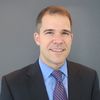Subra Suresh, an engineer and scientist, became director of the National Science Foundation (NSF) in September 2010. The independent federal agency provides about $7 billion a year for basic research conducted by America's colleges and universities in fields such as mathematics, computer science and the social sciences. Before joining the NSF, Suresh was the dean of the School of Engineering at the Massachusetts Institute of Technology (MIT). This interview was conducted by Tom Fox, who writes the Washington Post's Federal Coach blog.
NSF consistently performs among the top federal agencies in the Best Places to Work in the Federal Government rankings produced by the Partnership for Public Service. How do you keep your employees motivated and engaged?
NSF is unique. When compared to science and engineering academic institutions, we are very large. But as a federal agency, we're relatively small. We have about 1,400 employees in-house. Last year, we were able to fund about 250,000 individuals in the U.S. and 2,000 institutions. Our employees are people who are passionate about service, people who are passionate about science and engineering, people who are curious about understanding nature through science, and people who are passionate about education. What keeps the agency and the staff at the cutting edge is that they have an opportunity to engage with leading scientific discoveries, which form the backbone of innovation in this country.
What prepared you to lead the National Science Foundation?
I started with mechanical engineering, became a materials scientist and then slowly took to biology and biomedical engineering. That has given me a flavor for the broad scientific community; a flavor for different people and different perspectives. In addition to being a scientist, researcher and an educator, I've had administrative roles. I led an effort by MIT to establish a large research center in Singapore. It was a very good experience in international engagement, research management, global collaboration and multidisciplinary research. And because MIT receives a lot of federal funding, I had a lot of engagement with people who worked in government.
What are your biggest day-to-day challenges?
The number of truly outstanding proposals we receive seeking funding are far more than the number of proposals we can possibly finance. With the increase in the number of proposals, our staff has very severe workloads. Dealing with it is a great challenge. As a result, I set up a working group to figure out how we can improve the workload issue and how we can improve the way we can handle proposals. It's not only for NSF staff, but also for the research community. We're looking at updating the hardware and software we use and looking at technology to help solve the problem.
Have you taken steps to foster communication with and among employees?
There are multiple levels of conversation going on within the foundation and from the foundation to the outside world. All of these conversations are very healthy, but coordinating it is a major challenge. There are a number of things we have done. We've launched an electronic, two-way communication forum within NSF called IdeaShare. NSF staff can propose ideas, raise issues or comment. This is a way to foster greater communication, in addition to face-to-face communication. We also started an all-hands town hall meeting twice a year. We held our first one last fall. We find it useful for fostering internal communications.
What do you do to ensure that NSF remains open to fresh, innovative ideas?
Allowing the best ideas to bubble up is fundamental to our mission. A young, 25-year-old assistant professor at a university may have a brilliant idea. We want to hear about it, and we want to support it. A person who may be very junior in the academic hierarchy has the opportunity to provide information to the National Science Foundation. We ensure ideas are vetted with the larger research community.
What has most contributed to your ability to be a leader?
The thing that has helped shaped me as a human being, broadly, is the fact that I've had the opportunity to sample a variety of life experiences. I was born and raised in Asia. I came to the U.S. -- to Ames, Iowa -- so I lived in the Midwest for two years. I did my Ph.D. at MIT, so I lived in New England. Then, I went to California. I lived there for two years, working at the University of California. Then, I taught at Brown University for ten years. Then, I moved back to MIT. We also lived in Europe twice, once in France and once in Sweden. I've traveled all over the world. And my family is multicultural. My wife was born and raised here. So even at home, we have dealt with different religions, different backgrounds, different food habits, different skin colors. It's been part and parcel of my professional and my family life. That has shaped my views and thinking more than any one particular aspect of my life.
This post was originally featured on The Washington Post's website.
